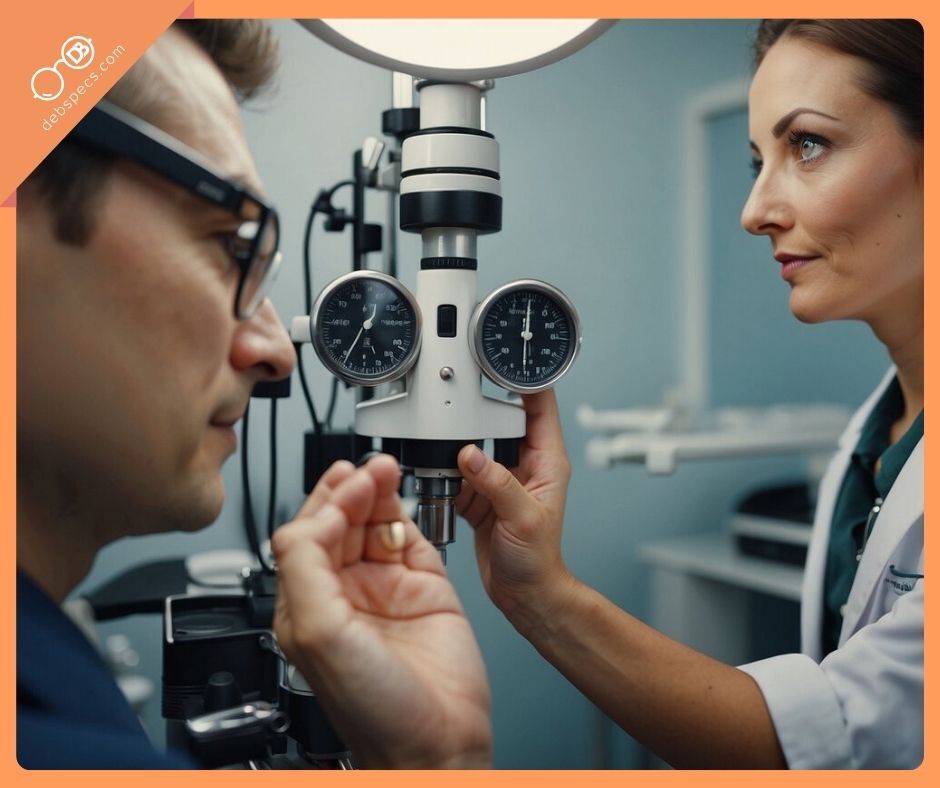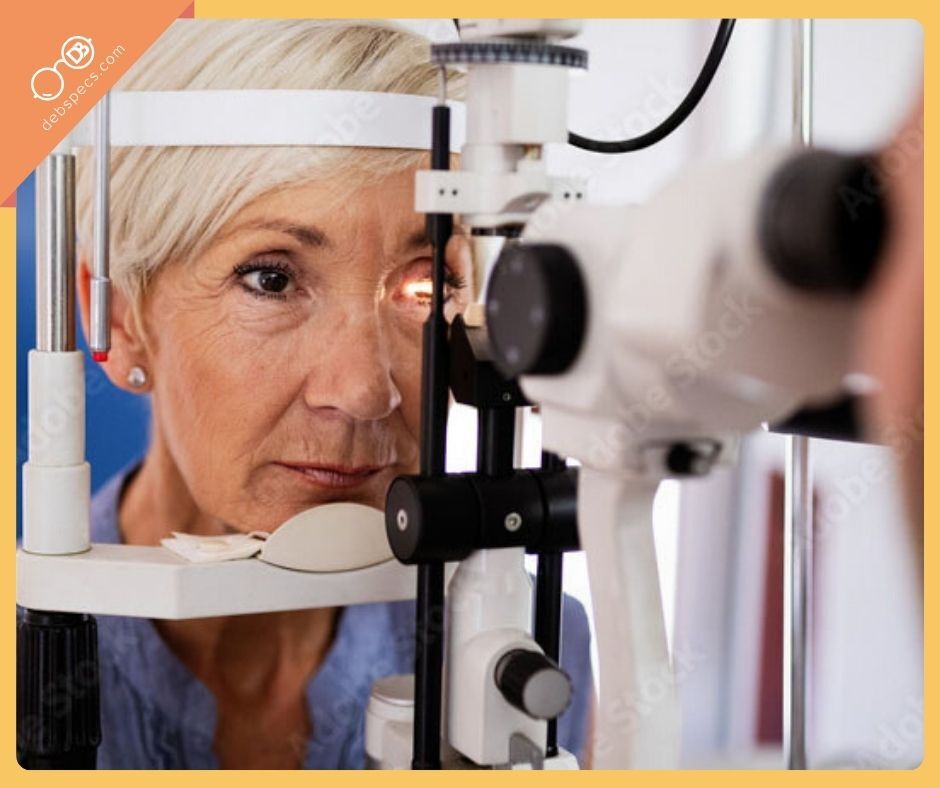
Eye Exams: The Complete Guide To Your Best Eye Health
Posted by Team Debby on 4th Aug 2024
Eye exams aren’t just about updating your glasses prescription—they’re about protecting your long-term eye health and catching issues early. Whether you’re rocking chic readers, contacts, or just want peace of mind, regular check-ups make all the difference.
This guide breaks down how often you really need an exam, what to expect at the appointment, and how to keep your eyes healthy for the long haul.
Why Regular Eye Exams Matter
Your eyes tell more than whether you need stronger readers—they can reveal health issues like diabetes, high blood pressure, and early signs of glaucoma or macular degeneration.
Think of eye exams as preventive maintenance. Catching issues early means easier treatment, better outcomes, and fewer surprises.
General guideline: Most adults should see their eye doctor every 1–2 years. But depending on your age, health, and risk factors, you may need them more often.

Applying What Eye Exams Reveal About Your Vision Needs
As the article highlights, a thorough eye exam can uncover subtle shifts in clarity, focus, and comfort that aren’t always obvious day to day. Readers designed with precise magnification and balanced optics can help support those changing needs between appointments, making close work feel clearer and less tiring. The selections below show how these insights translate into practical, everyday vision support.
Eye Exam Frequency by Age
Children (6 months–18 years)
- First exam: 6 months old
- Second: Age 3
- Before starting school
- Every 1–2 years after that
Why? Kids often don’t realize they can’t see clearly. Early exams help detect issues like lazy eye or crossed eyes before they interfere with learning or confidence.
Adults (18–60)
- Every 2 years if you’re healthy and low-risk
- Yearly if you:
- Have diabetes or high blood pressure
- Wear contact lenses
- Have a family history of eye disease
- Experienced eye injuries
Once you hit 40, yearly exams become smart—this is when age-related changes often start showing up.
Seniors (60+)
- Annual exams are essential
- Keep an eye on common concerns like cataracts, glaucoma, and macular degeneration
- Early detection = more independence, more style, and more confidence in daily life
What to Expect at an Eye Exam
No need to stress—here’s what typically happens:
- Visual Acuity Test: Reading the famous letter chart.
- Refraction Assessment: Pinpointing your lens prescription.
- Eye Muscle & Field Tests: Checking coordination and side vision.
- Color Vision Testing: Screening for color blindness.
- Tonometry: That puff of air test for glaucoma.
- Slit-lamp Exam: Looking closely at the structures of your eyes.
Your doctor may also dilate your pupils for a deeper look at the retina and optic nerve. Sometimes, advanced imaging like OCT or retinal photography is used for extra detail.
Tip: Bring your current glasses or contacts, plus any questions you have.
Understanding Your Prescription
After your exam, your optometrist will go over your results. Here’s the quick breakdown:
- SPH (Sphere): Nearsighted or farsighted correction
- CYL (Cylinder): Astigmatism correction
- Axis: Orientation of astigmatism correction
If it looks like secret code, don’t worry—ask your doctor to explain. The more you understand, the easier it is to choose eyewear that suits your needs and lifestyle.
Choosing the Right Eyewear
Eyewear isn’t just about clear vision—it’s about style and self-expression. When selecting glasses:
- Daily routine matters: Computer lenses for screen-heavy jobs, sports goggles if you’re active.
- Lifestyle counts: If you’re a bookworm, chic progressive readers might be your go-to.
- Fashion first: Look for frames that flatter your face shape and match your personal vibe.
At DebbySpecs, we believe your glasses should be just as stylish as your favorite pair of shoes.

Keeping Your Eyes Healthy
Everyday Prevention
- Wear sunglasses with UV protection.
- Eat a diet rich in leafy greens, fish, and colorful fruits.
- Stay hydrated and exercise regularly.
- Avoid smoking (your eyes will thank you).
Screen Time Survival
- Follow the 20-20-20 rule: every 20 minutes, look 20 feet away for 20 seconds.
- Position screens slightly below eye level and an arm’s length away.
- Use artificial tears if your eyes feel dry.
- Consider blue-light filtering lenses for heavy device use.
Insurance & Eye Care Costs
Eye care is an investment, but planning helps.
- With vision insurance: Coverage usually includes yearly exams, prescription eyewear discounts, and sometimes special procedures.
- Without insurance: Average costs in the U.S. are:
- Eye exam: $50–$250
- Eyeglasses: $100–$600
- Annual contact lens supply: $200–$800
- Corrective surgery: $2,000–$5,000 per eye
Budget-savvy options: HSAs, FSAs, payment plans, or seasonal eyewear deals (like our DebbySpecs bundles).
TL;DR
- Kids: First exam at 6 months, then 3 years, before school, then every 1–2 years.
- Adults 18–60: Every 2 years, unless you’re at higher risk—then yearly.
- After 40: Annual exams recommended.
- Seniors 60+: Annual exams are a must.
- Prevention: Sunglasses, healthy diet, screen breaks, and no smoking.
FAQs About Eye Exams
Q: How long does an eye exam take?
A: Usually 30–60 minutes, depending on the tests and whether dilation is needed.
Q: Can I drive after dilation?
A: Your vision may be blurry and light-sensitive for a few hours. Plan a ride just in case.
Q: How often should I update my glasses prescription?
A: Every 1–2 years, or sooner if you notice vision changes.
Q: What symptoms mean I should book an exam ASAP?
A: Blurred vision, flashes of light, sudden floaters, loss of vision, headaches, or trouble seeing at night.
Q: Are eye exams safe?
A: Yes. At most, you’ll experience brief discomfort from bright lights or dilation. Side effects are temporary.
Myth vs Fact
Myth: Eye exams are only for people who already wear glasses.
Fact: Even if your vision seems fine, exams can detect hidden health issues.
Myth: Reading glasses from the drugstore are “good enough.”
Fact: They’re fine in a pinch, but custom readers from DebbySpecs fit better, last longer, and look way more stylish.
At DebbySpecs, we believe great vision and great style go hand in hand. Stay proactive with your eye exams, and when it’s time to update your look, we’ve got frames that flatter your face as much as they sharpen your vision.



